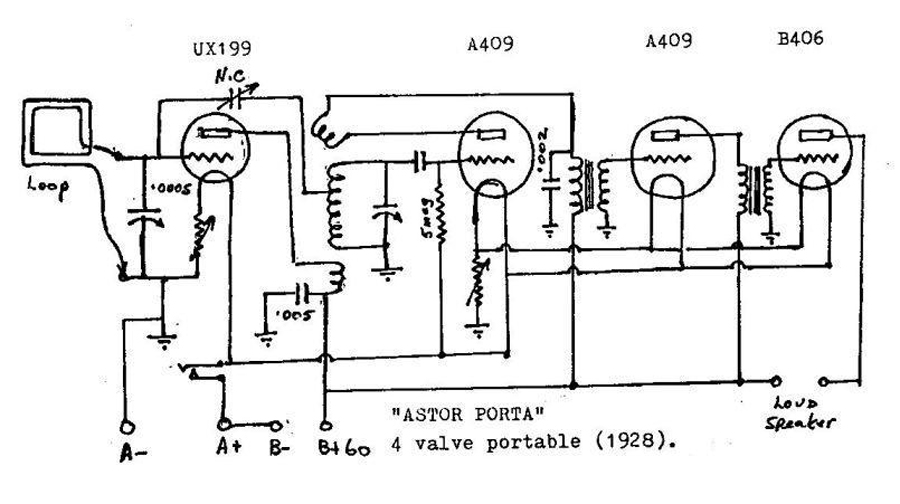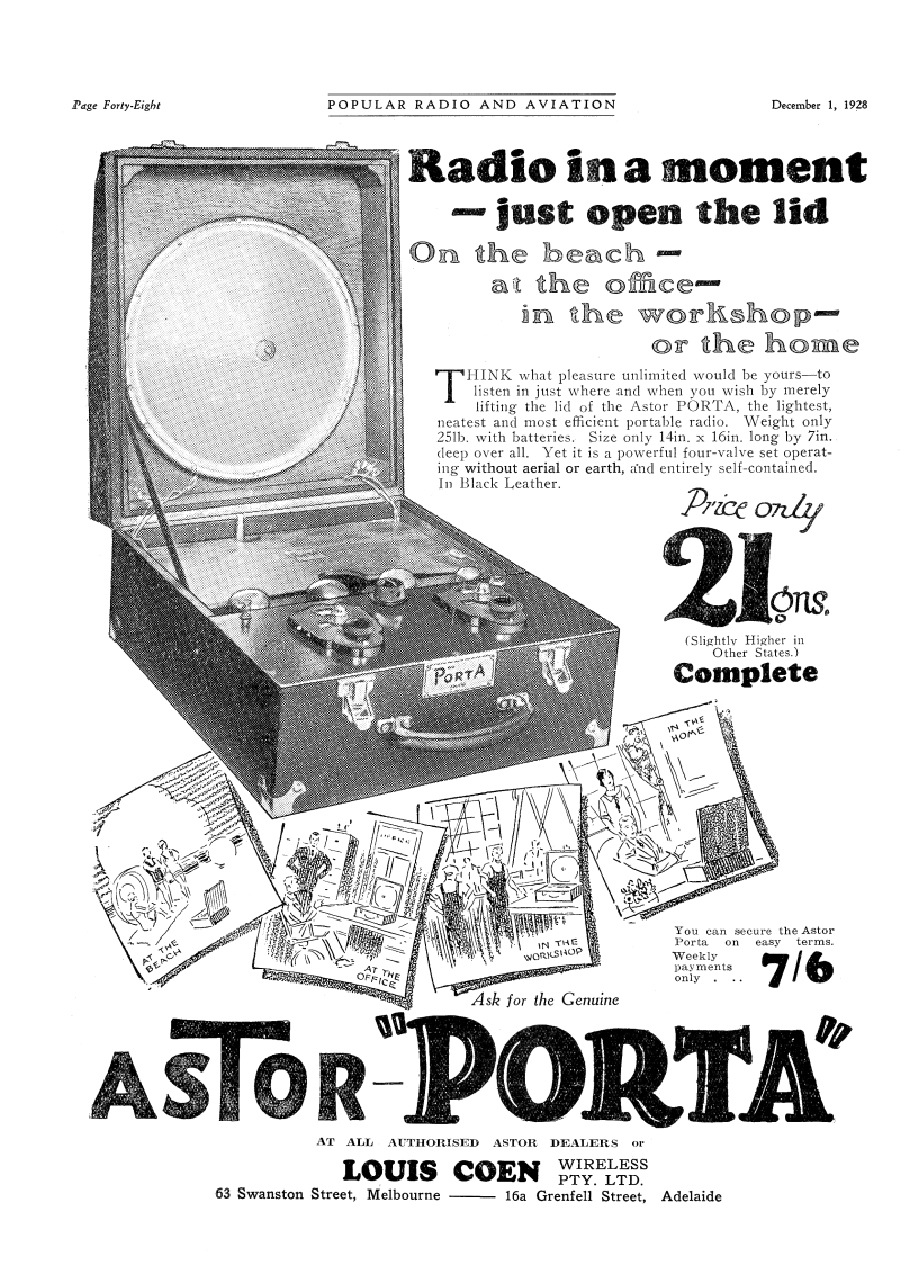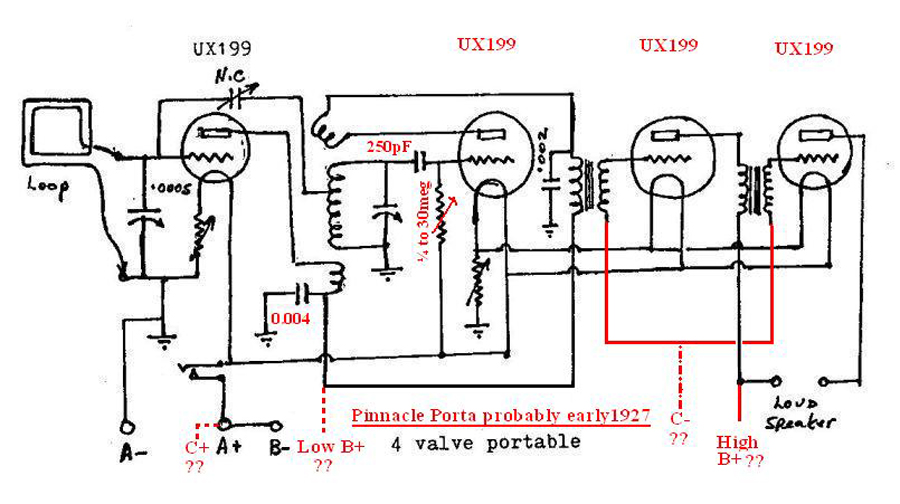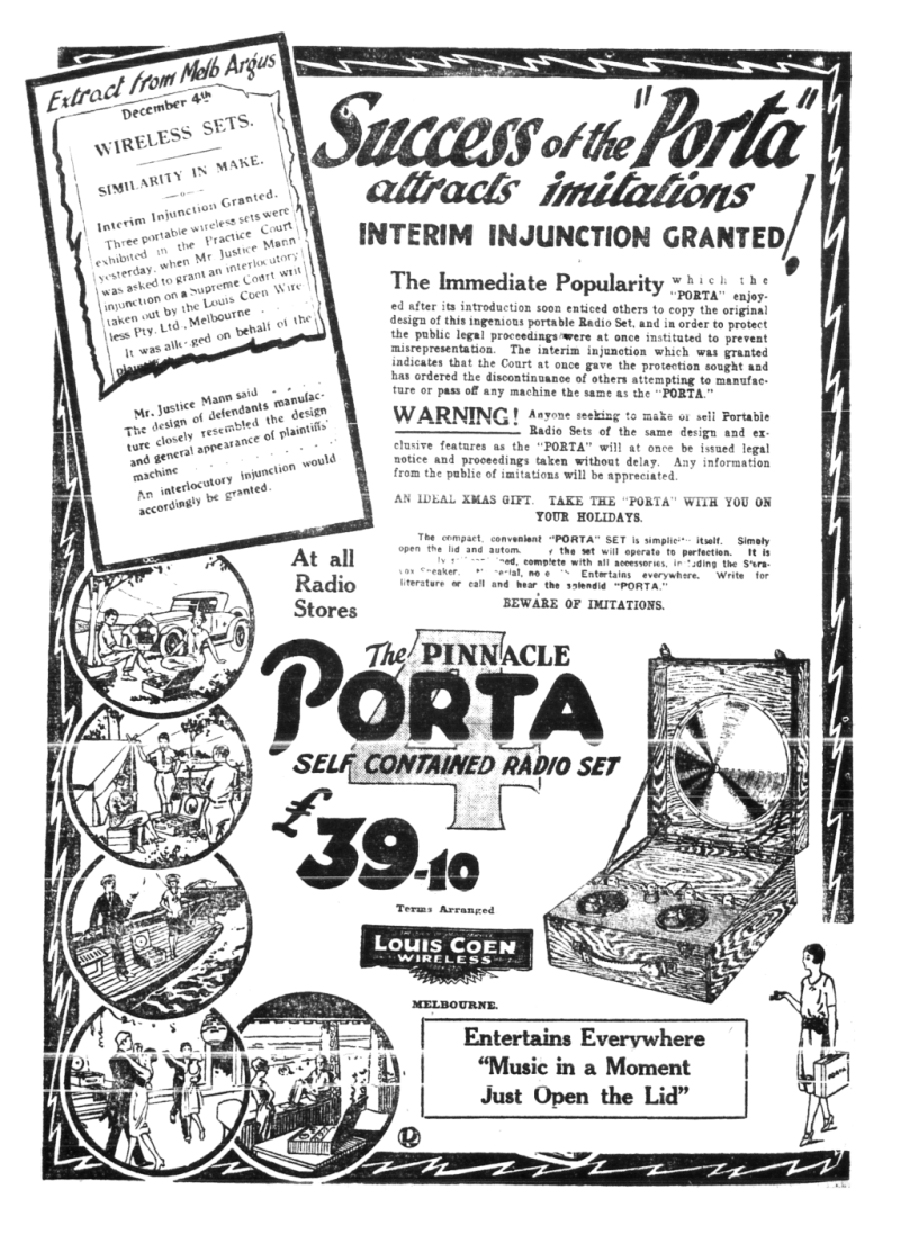Tech Talk
Forum home - Go back to Tech talk
|
Pinnacle Porta possibly Model 2 Set #C401
|
|
|
« Back ·
1 ·
Next »
|
|
|
Return to top of page · Post #: 1 · Written at 4:43:26 PM on 14 August 2019.
|
|
|
|
Location: Ashburton, VIC
Member since 11 November 2015 Member #: 1821 Postcount: 8 |
|
I am currently looking at a partly restored Pinnacle Porta in order to identify its salient point for an Astor Book Revision. |
|
|
Return to top of page · Post #: 2 · Written at 8:54:11 PM on 14 August 2019.
|
|
|
|
Location: Wangaratta, VIC
Member since 21 February 2009 Member #: 438 Postcount: 5595 |
|
It is / was a good idea even that it is probably wrong, to reverse engineer what you have. The plot of those was pretty much the same. The resultant circuit may then be helpful. |
|
|
Return to top of page · Post #: 3 · Written at 11:58:40 PM on 14 August 2019.
|
|
|
|
Location: Ashburton, VIC
Member since 11 November 2015 Member #: 1821 Postcount: 8 |
|
The Ray Kelly Astor Porta circuit had 60 V on the detector plate which seems high for an A409. |
|
|
Return to top of page · Post #: 4 · Written at 9:47:18 AM on 15 August 2019.
|
|
|
|
Location: Sydney, NSW
Member since 28 January 2011 Member #: 823 Postcount: 6882 |
|
Is this the model you speak of? https://www.radiomuseum.org/r/astor_porta.html |
|
|
Return to top of page · Post #: 5 · Written at 3:35:12 PM on 15 August 2019.
|
|
|
|
Location: Wangaratta, VIC
Member since 21 February 2009 Member #: 438 Postcount: 5595 |
|
That looks like a plausible combination 99 is a low 90V tube with a 3V filament all the rest will take 150V but the trap is 4V filaments, with appropriate bias, so there is a possibility of one of those multi tap "C" batteries? |
|
|
Return to top of page · Post #: 6 · Written at 1:28:46 AM on 16 August 2019.
|
|
|
|
Location: Ashburton, VIC
Member since 11 November 2015 Member #: 1821 Postcount: 8 |
|
I have many advertisements of both Astor and Pinnacle Porta though only the one Ray Kelly Astor circuit plus the modified one I drew. The standard of workmanship of the earlier Pinnacle Porta is significantly different (poorer) than the Astor Porta. According to the Radiomuseum website the Pinnacle Manufacturing Company was in 573 Flinders Lane (Essex House) which I have verified was also Louis Coen Wireless. I will guess the Astor Porta was actually made by Radio Corporation Australia.     |
|
|
Return to top of page · Post #: 7 · Written at 10:29:29 PM on 16 August 2019.
|
|
|
|
Administrator
Location: Naremburn, NSW
Member since 15 November 2005 Member #: 1 Postcount: 7548 |
|
Photos uploaded to Post 6. ‾‾‾‾‾‾‾‾‾‾‾‾‾‾‾‾‾‾‾‾‾‾‾‾‾‾‾‾‾‾‾‾‾‾‾‾‾‾‾‾‾‾‾‾‾‾‾‾‾‾‾‾‾‾‾‾‾‾‾‾‾‾‾‾‾‾‾‾ A valve a day keeps the transistor away... |
|
|
Return to top of page · Post #: 8 · Written at 1:11:03 AM on 17 August 2019.
|
|
|
|
Location: Ashburton, VIC
Member since 11 November 2015 Member #: 1821 Postcount: 8 |
|
The Pinnacle Superhet stole the limelight at the 1925 Radio show claiming vague origins of London Paris Chicago rather than Flinders Lane Melbourne! The console was priced at 140 gns, Table model 100gns. Also featured was the Pinnacle TRF 5 and 6 (possibly Neutrodyne (unlicenced).These were the first Pinnacle sets. Louis Coen Wireless introduced the high end models just to announce the manufacturer. They were not equipped to go into production - so priced them outrageously. |
|
|
Return to top of page · Post #: 9 · Written at 9:45:42 AM on 17 August 2019.
|
|
|
|
Location: Wangaratta, VIC
Member since 21 February 2009 Member #: 438 Postcount: 5595 |
|
One of the ways to not get caught with age, is to find out if possible (I have a list of some) as to when the valve's were actually released? |
|
|
Return to top of page · Post #: 10 · Written at 12:34:36 AM on 18 August 2019.
|
|
|
|
Location: Ashburton, VIC
Member since 11 November 2015 Member #: 1821 Postcount: 8 |
|
Thanks Marc you are quite correct about the biasing - it is there, though not obvious being the difference between the voltage the valves are set at minus the 4.5 volt battery supply. As it was common to underun the valves in the 20s battery sets there could easily be up to about a volt bias available. My gut feeling is that this is possibly about right at 60 volts. |
|
|
Return to top of page · Post #: 11 · Written at 1:54:25 AM on 18 August 2019.
|
|
|
|
Location: Wangaratta, VIC
Member since 21 February 2009 Member #: 438 Postcount: 5595 |
|
One cannot in most sets put positive on the grid. Having said that, if positive can make the grid hot enough it can become negative (RCA). |
|
|
Return to top of page · Post #: 12 · Written at 11:48:13 AM on 20 August 2019.
|
|
|
|
Location: Ashburton, VIC
Member since 11 November 2015 Member #: 1821 Postcount: 8 |
|
Most of the early 20s gridleak detector circuits used positive bias on the grid return. For the reason the detector plate voltage was kept low often around 20 volts to stop the recommended plate current being exceeded. |
|
|
Return to top of page · Post #: 13 · Written at 3:17:16 PM on 20 August 2019.
|
|
|
|
Location: Wangaratta, VIC
Member since 21 February 2009 Member #: 438 Postcount: 5595 |
|
As said should have data. You will note that for the leaky grid they do specify which side of the filament the grid is connected too: That is important, Anode bend is mentioned as a detector. The other way common in Autodynes pre valves with separate diodes involved either a "C" battery or in heater tubes a very high resistance cathode (self bias) to bias the valve to near cut off so that you had something like a plate current of 0.2mA. |
|
|
Return to top of page · Post #: 14 · Written at 8:05:49 PM on 28 August 2019.
|
|
|
|
Location: Ashburton, VIC
Member since 11 November 2015 Member #: 1821 Postcount: 8 |
|
OK Re the B batteries in the 20's I have verified that these were multitapped affairs so I will guess that there was a 22.5 tap run separately for the detector rather than running it on 60 volts. So I think the first circuit drawn by Ray might be incorrect. My "guess" then is that the RF stage, 1st audio and output stage all operated on 60 volts while the detector was around 22.5 v. |
|
|
Return to top of page · Post #: 15 · Written at 8:42:11 PM on 28 August 2019.
|
|
|
|
Location: Wangaratta, VIC
Member since 21 February 2009 Member #: 438 Postcount: 5595 |
|
Most of the 45V batteries were tapped & the combinations progressed in steps of 22.5 V. |
|
|
« Back ·
1 ·
Next »
|
|
|
You need to be a member to post comments on this forum.
|
|

Sign In

Vintage Radio and Television is proudly brought to you by an era where things were built with pride and made to last.
DISCLAIMER: Valve radios and televisions contain voltages that can deliver lethal shocks. You should not attempt to work on a valve radio or other electrical appliances unless you know exactly what you are doing and have gained some experience with electronics and working around high voltages. The owner, administrators and staff of Vintage Radio & Television will accept no liability for any damage, injury or loss of life that comes as a result of your use or mis-use of information on this website. Please read our Safety Warning before using this website.
WARNING: Under no circumstances should you ever apply power to a vintage radio, television or other electrical appliance you have acquired without first having it checked and serviced by an experienced person. Also, at no time should any appliance be connected to an electricity supply if the power cord is damaged. If in doubt, do not apply power.
Shintara - Keepin' It Real · VileSilencer - Maintain The Rage
